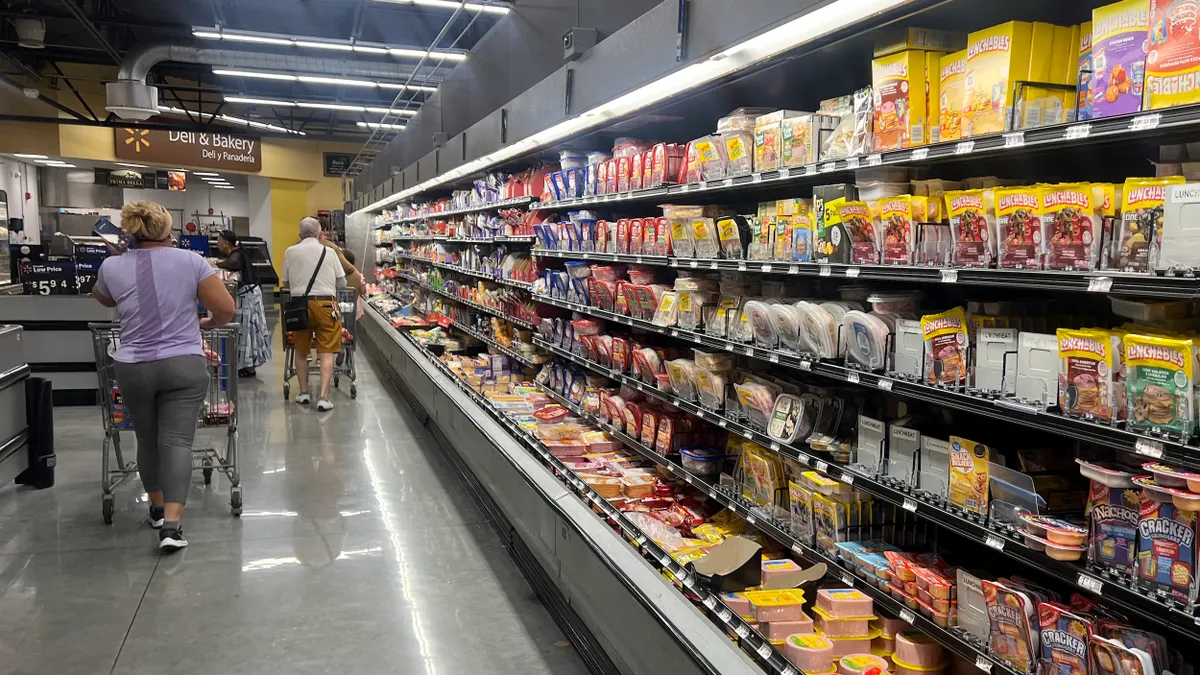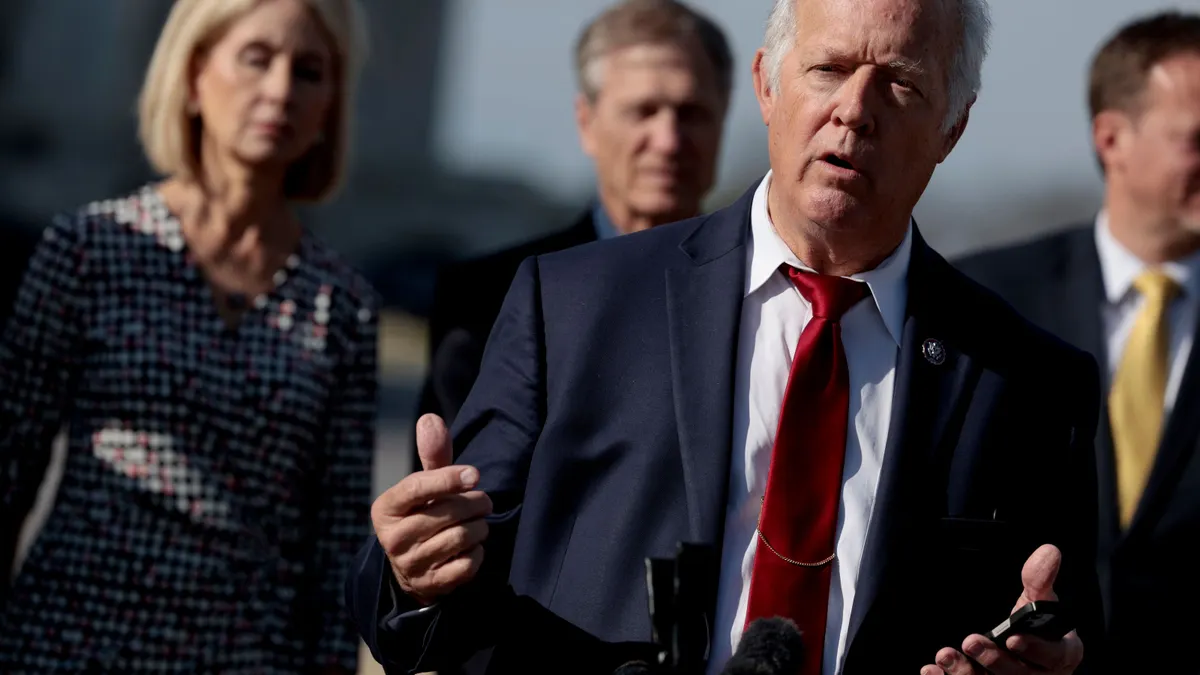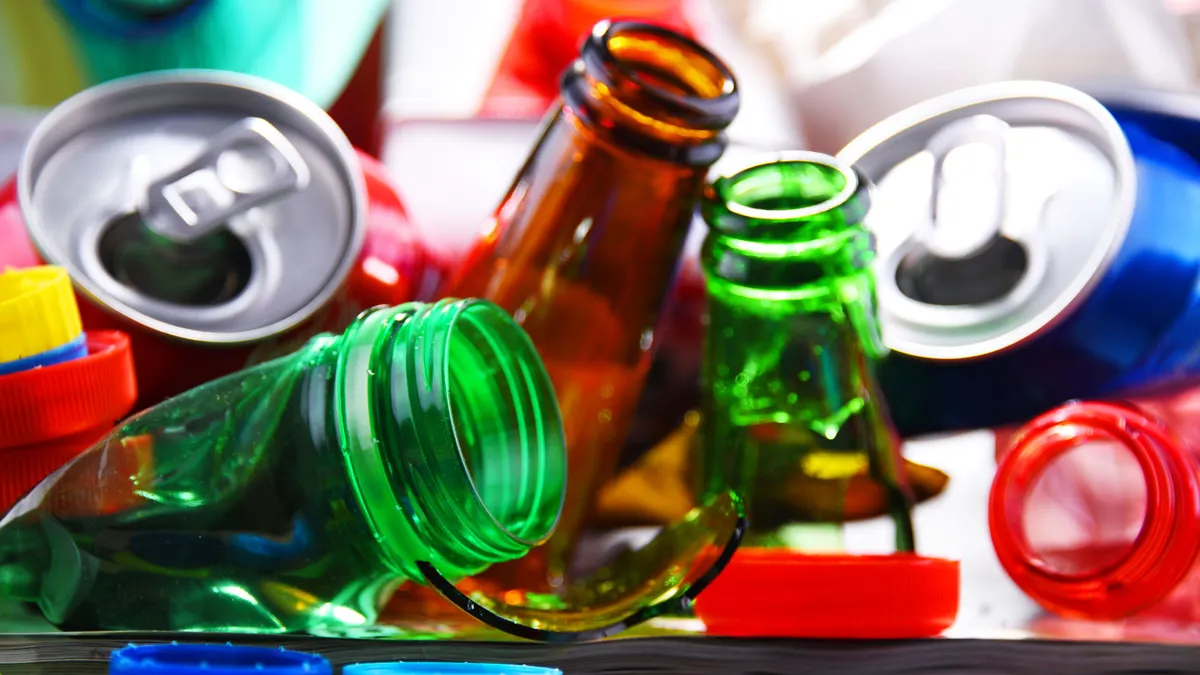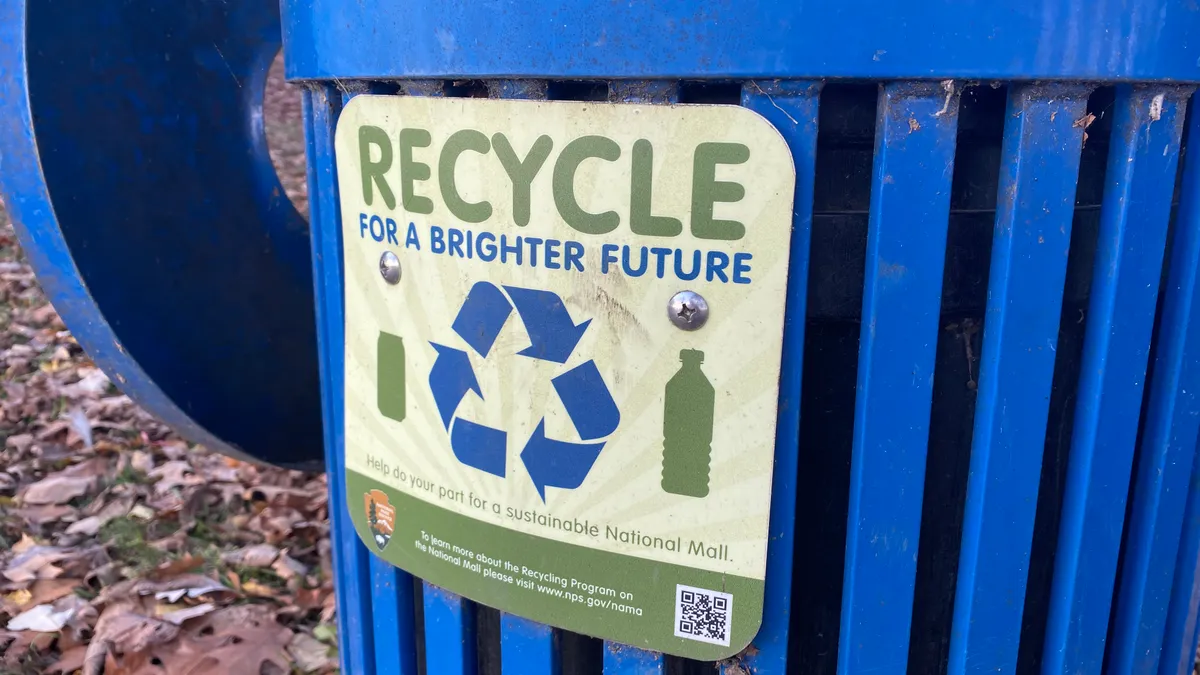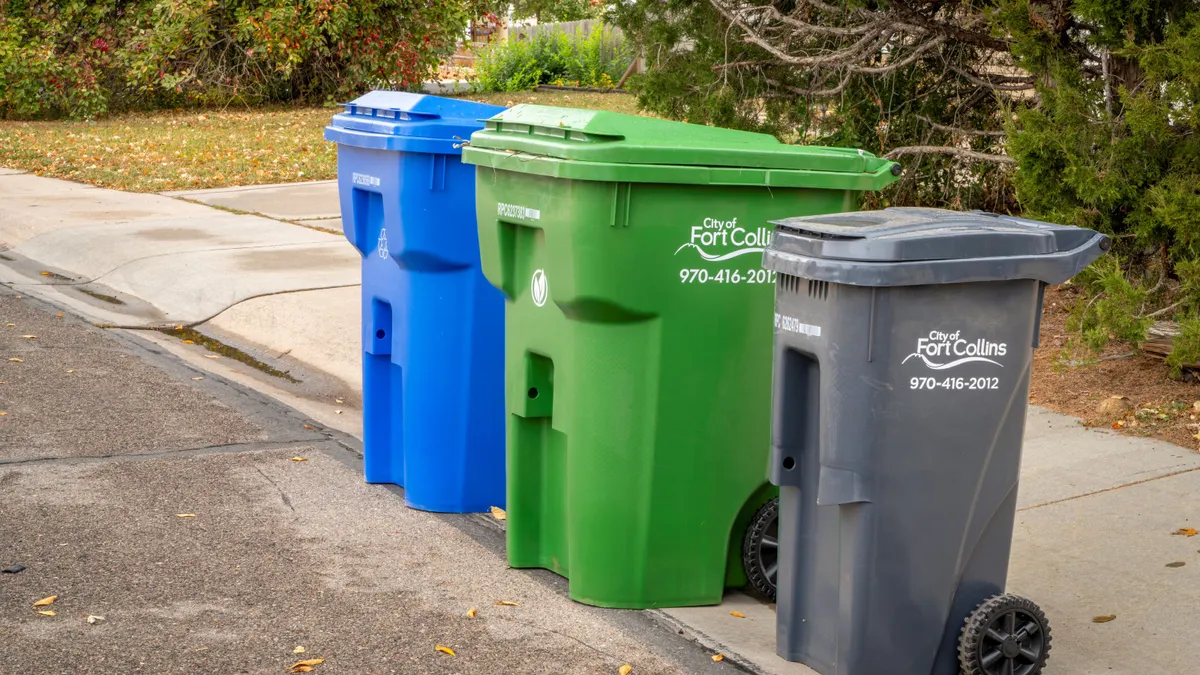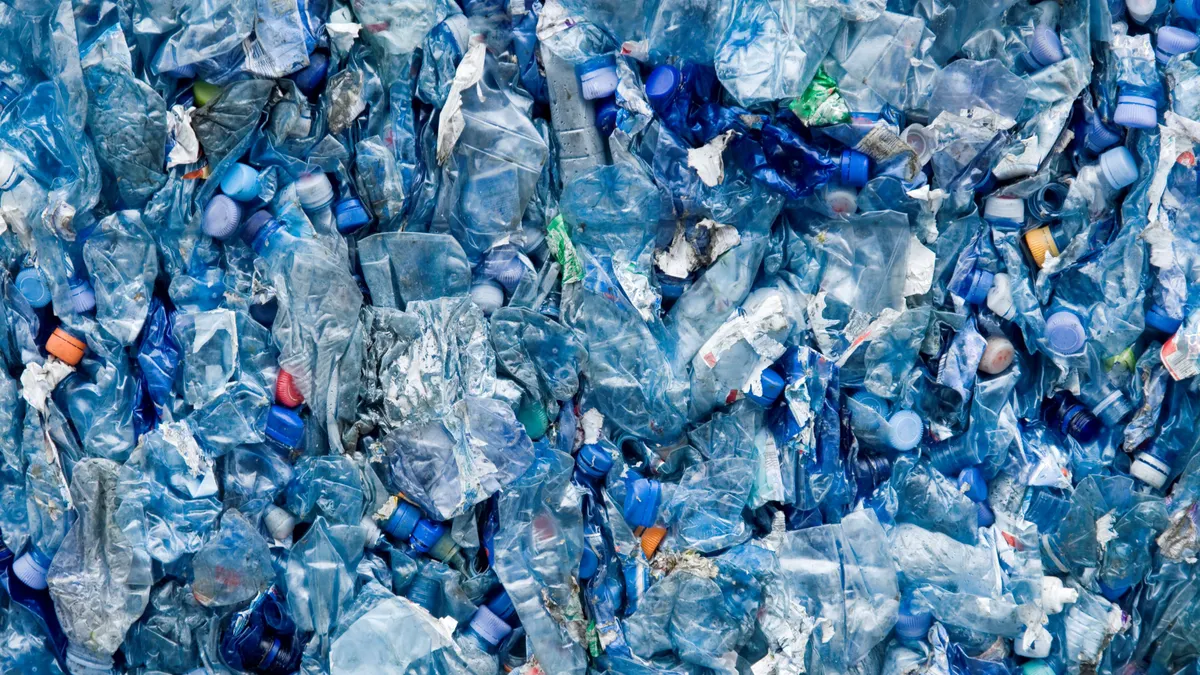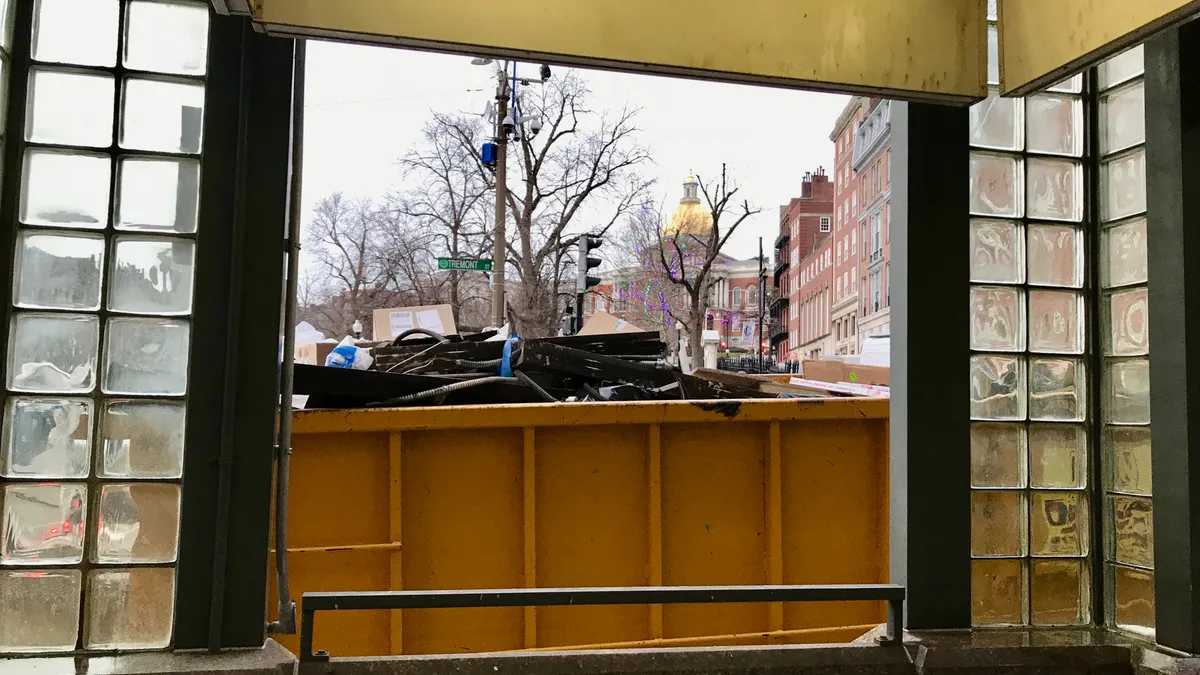Editor's Note: This piece was written by Charles A. White, a senior advisor in the Sacramento office of Manatt, Phelps & Phillips, LLP. The opinions represented in this piece are independent of Waste Dive's views.
The state of California potentially is embarking on a mandatory comprehensive program to address packaging waste. This is in line with what some other national, regional and local governments are considering for their respective jurisdictions. The European Union, many Canadian provinces, China, India and the state of Connecticut — to name just a few — have adopted regulatory programs to manage and reduce packaging waste.
Retailers and manufacturers are also playing an important role by seeking to replace excessive packaging with more lightweight, less expensive and reusable packaging designs. Many manufacturers and retailers are working cooperatively — and voluntarily — with government and other stakeholders to minimize the impacts of packaging waste.
To build on voluntary industry efforts, the California Department of Resources Recycling and Recovery (CalRecycle) launched a "Manufacturers Challenge" in 2015. CalRecycle challenged product manufacturers and brand owners — on a collective basis, not on an individual company level — to voluntarily achieve a 50% reduction in packaging disposed in landfills in California by 2020. In CalRecycle’s view, the packaging industry failed to organize and respond sufficiently to this challenge. CalRecycle currently views the voluntary efforts of the packaging industry as insufficient to reduce landfill disposal of packaging waste and to achieve California’s stated recycling goals.
What's the problem?
The principal driver of CalRecycle’s efforts to address packaging waste is legislation (AB 341, Chesbro) that established a statewide, mandatory commercial waste recycling program in 2011. Virtually all commercial enterprises generating more than 4 cubic yards of waste and recyclables per week will ultimately be required to recycle or use recycling services. In addition, this legislation also set a goal of achieving a statewide 75% waste diversion rate by 2020. CalRecycle is now using this stated goal as legislative direction to consider additional comprehensive mandatory regulatory programs to achieve 75% recycling. At present, CalRecycle does not have legislative authority to implement the additional comprehensive mandatory regulatory programs the organization believes may be needed to achieve this goal.
According to the report, the current system by which we produce, use and dispose of plastics has significant drawbacks: Plastic packaging material is typically used only once, resulting in lost value of $80 billion to $120 billion each year.

Although there is support from many environmental groups and local governments for further mandatory programs to reduce packaging waste, there is also growing concern about the nature and scope of such potential future measures. CalRecycle held a workshop on Oct. 10, 2017, in Sacramento, at which it was unable to clearly articulate an overarching need to protect the environment from packaging waste that would warrant additional comprehensive mandatory controls — a point that highlighted the complexities of implementing such a program.
From CalRecycle’s perspective, AB 341 establishing the so-called goal of 75% recycling appears to be the principal driver. Further, at this workshop, CalRecycle acknowledged that the amount of packaging waste in the overall disposal stream actually decreased from 9.5 million tons in 2008 to 8 million tons in 2014 — a decline of 17% over this six-year period. This is most likely due to increased efforts by the packaging industry to reduce the amount of packaging being used, as well as efforts by consumers, local government and recycling service providers to step up their efforts to recycle packaging waste. If these efforts are working, albeit at a modest pace, is there a need to pursue anything more?
Litter, stormwater and marine debris
Despite the efforts of manufacturers, retailers, consumers, local government and recycling service providers, excess packaging is often mismanaged by consumers — ending up as litter that degrades our environment and harms our waterways and oceans (see below). For example, a report released in 2016 by the World Economic Forum (WEF) details the extent of the plastics packaging problem worldwide. The report, "The New Plastics Economy: Rethinking the Future of Plastics," provides a vision of a global economy in which plastics never become waste and are continuously recycled. According to the report, the current system by which we produce, use and dispose of plastics has significant drawbacks: Plastic packaging material is typically used only once, resulting in lost value of $80 billion to $120 billion each year. Aside from the financial cost, the report asserts that remaining on the current track means that by 2050, oceans are expected to contain more plastics than fish by weight.
In a draft report expected to be finalized by early 2018, the State of California Ocean Protection Council, with the support of the California Natural Resources Agency, will likely make two priority policy recommendations for legislative action in the upcoming years — prohibiting single use products if a feasible, less damaging alternative is available and requiring the phaseout of single-use products, like convenience food and beverage packaging, from public institutions and facilities.
It is clear that the management of single-use materials (including packaging) that are easily discarded will be a subject of continuing rigorous debate in California in the upcoming months.
Also, in response to the concerns over packaging waste and other waste materials being dispersed into the environment, the California State Water Resources Control Board (SWRCB) and many of the nine Regional Water Quality Control Boards (RWQCBs) have adopted trash control policies. On April 7, 2015, the SWRCB adopted policies to limit the amount of trash discharged to the ocean waters of California (Ocean Plan) and to the state's inland surface waters, enclosed bays and estuaries (ISWEBE Plan). Together, these are collectively referred to as "the Trash Amendments."
Most local governments recognize that taking responsibility for reducing trash in waterways will be an extremely expensive undertaking, so they are looking at ways to shift some of this cost to other parties — such as the manufacturers, distributors, and retailers of trash and packaging materials that are discarded and discharged to waterways.

The objective of the Trash Amendments is to provide statewide consistency for the SWRCB’s regulatory approach to protecting aquatic life and public health beneficial uses, and reducing environmental issues associated with trash in state waters, while focusing limited resources on high-trash-generating areas. Although trash is a broad, generic category of materials, packaging waste is a major part of the problem. The Trash Amendments essentially place an absolute prohibition on the discharge of trash to stormwaters of the state. The Trash Amendments also provide a framework for implementing their provisions that would be incorporated into the stormwater and waste discharge permits issued by the state and regional boards. The stormwater discharge permit categories include municipal systems, state highways, industrial sites and construction sites. Municipal permit holders must be in full compliance with the Trash Amendments within ten years of the first implementing permit and 15 years after the effective date of the Trash Amendments.
California local governments are responding to the Trash Amendments in a variety of ways. Most local governments recognize that taking responsibility for reducing trash in waterways will be an extremely expensive undertaking, so they are looking at ways to shift some of this cost to other parties — such as the manufacturers, distributors, and retailers of trash and packaging materials that are discarded and discharged to waterways. Industry, on the other hand, is quick to point out that these discharges are the result of individuals improperly discarding these waste materials — and thus that businesses should not be held fully responsible.
Local governments are beginning to address this challenge. In one recent example, California legislation was enacted (AB 1180, Holden, 2017) that authorizes the Los Angeles County Flood Control District to levy a tax, fee, or charge to pay the expenses of carrying out projects and programs to reduce stormwater and urban runoff pollution in the district. The fee payers likely will include a mix of residents, retail stores and commercial enterprises. In fact, something like a previous, unsuccessful effort by Los Angeles County, which based a proposed fee on the amount of stormwater runoff from each parcel in the county, may emerge out of the new authority granted in AB 1180. This type of program could go a long way toward reducing the amount of trash pollution entering the waters of the state — but will it be enough?
Is packaging waste in a landfill really a problem?
Of course, there is also the concern about using landfills to manage packaging waste. The efforts of CalRecycle to consider comprehensive mandatory packaging regulatory strategies appear driven almost entirely by concerns over packaging waste disposal in landfills. CalRecycle is appropriately focusing on the landfill disposal of food waste, a significant source of landfill methane emissions.
Even if a landfill provides a safe repository for packaging waste, it makes little sense to fill up a landfill with packaging waste that has a worldwide estimated discarded value of $80 billion to $120 billion each year. However, given the choice of dispersing packaging waste into the environment, waterways and oceans, putting these materials in well-designed landfills would certainly seem to be a better option. Restrictions on landfill disposal of packaging waste could lead to increased disposal into the environment. But is there a better way?
Energy recovery is largely absent from California’s version of the waste hierarchy. Only very limited energy recovery options are allowed for waste and waste residuals in California, due to concerns over toxic emissions resulting from the combustion of solid waste. The traditional waste hierarchy however, neglects an even lower level of waste management (or rather, mismanagement): uncontrolled dispersion into the environment. An example of this is when a waste material is discarded as litter and ultimately washed away by stormwater and discharged to the ocean. In recognition of this last, unspoken tier, land disposal and energy recovery (as a low-carbon fuel) should be seen as better alternatives.
One of California’s cutting-edge environmental programs is the Low Carbon Fuel Standard (LCFS) managed by the California Air Resources Board (CARB). This program is fuel neutral, focusing entirely on the life cycle "carbon intensity" of various fuels. Studies have shown that converting solid waste (including packaging waste) to fuel can produce some of the lowest-carbon fuels. Recent work by the provincial government of British Columbia suggests that a substantially negative-carbon-intensity fuel can be produced from residual solid waste using conversion technologies.
Are there markets for California's recycled packaging waste?
Currently, California is highly dependent on other jurisdictions and countries to manufacture new products from its recycled waste materials, including packaging waste. Historically, according to CalRecycle, most of what is collected in California's recycle bins is exported, with most going to China.
China has been in the news recently for its new import policies, which have virtually stopped all imports of packaging waste. Much of California's (and the rest of the world's) packaging waste shipments are being held up by such programs in China. California typically regulates recycled materials as being exempt from solid waste laws if they contain less than 10% contamination by weight. China’s policy, however, now restricts imports of waste-derived materials that contain more than 0.3% contamination.
The challenge facing California and other jurisdictions that export recycled material is whether internal markets for the use of recycled materials can be developed. Most observers think this is possible, but it will not happen overnight — certainly not by 2020 — and will be very expensive.
What is CalRecycle up to now?
California enjoys a reputation of being a bellwether state with respect to a wide variety of programs and policies. The new CalRecycle packaging waste initiative is no different. CalRecycle is the lead California regulatory agency considering the need to develop comprehensive mandatory programs to directly regulate packaging waste.
According to CalRecycle, although (as pointed out above) the total amount of packaging waste disposed in California landfills decreased by 17% from 2008 to 2014, one-third of the 66 million tons of solid waste generated by Californians each year is packaging. Of the amount that is not recycled but is disposed of in landfills, approximately one-quarter of the 43 million tons of waste disposal in California is packaging waste.
In order to meet the statewide goal of 75% reduction of solid waste disposal by 2020, 24 million tons of solid waste will have to be reduced, recycled or composted. Assuming it would cost only an additional $50 per ton to achieve this goal, the new annual cost reaches over $1 billion per year. Other estimates put this price tag much higher.
To identify priority packaging that is to be targeted by this initiative, CalRecycle is considering the following factors: Prevalence in the disposed waste stream, usage trends, current collection infrastructure, current processing infrastructure, greenhouse gas impacts of recycling, and waterway and marine debris.
Of the above factors, the only ones that can be directly linked to the protection of human health, public safety and the environment are the last two: marginal GHG impacts, if any, and waterway and marine debris.
Thus far, CalRecycle has identified several priority packaging materials for potential future regulatory action; these fall into two broad categories: fiber and plastic. One of the challenges facing CalRecycle will be determining the specific definitions used to target the potential priority packaging, including uncoated corrugated cardboard, waxed cardboard, film plastic, EPS and plastic drink pouches. All these packaging types are hard to specifically define and to differentiate from other nonpackaging applications.
The next stage in CalRecycle's process will be to identify and propose regulatory strategies that would be applied to these packaging material types. It is unlikely that CalRecycle would recommend only a single regulatory strategy, as all the materials involve different uses and characteristics.
Are there other policy models to consider?
Many observers are questioning CalRecycle's apparent focus on a limited range of models that utilize command-and-control strategies or direct market intervention mechanisms. One alternative concept would be to consider a sustainable materials management (SMM) policy — such as the one described by the USEPA, which is currently being pursued by the state of Oregon.
As described by the USEPA, SMM is a systemic approach to using and reusing materials more productively over their entire life cycle. It represents a change in how our society thinks about the use of natural resources and environmental protection. By examining how materials are used throughout their life cycle, an SMM approach seeks to:
- Use materials in the most productive way, with an emphasis on using less.
- Reduce toxic chemicals and environmental impacts throughout the material's life cycle.
- Assure we have sufficient resources to meet today's needs and those of the future.
Oregon's approach is oriented toward collaboration and developing partnerships with all stakeholders rather than sweeping command-and-control regulations. Oregon believes coordination throughout the life cycle of materials and products will support innovative solutions, through partnerships with other state agencies, businesses, local governments and nongovernmental organizations.
Where do we go from here?
CalRecycle is expected to finalize its recommendations for a packaging policy model in early 2018, at the beginning of the final year of California's current two-year legislative session. As previously noted, CalRecycle does not currently have the regulatory authority to implement many of the policy models it seems to be leaning toward. It is widely expected, however, that legislation will be introduced that authorizes CalRecycle to implement its packaging policy recommendations. The options facing the legislature are many, but the key options appear to be either implementing regulatory measures for each priority packaging type or reconsidering the need for further legislative and regulatory action. There are a few concerns that could drive that reconsideration, including the feasibility of a 75% recycling goal by 2020; the impacts of China's import policies; and whether further evaluation of the potential to produce low-carbon fuel from waste residuals is necessary.
Regardless of the eventual outcome, it is safe to say that the next few months are likely to see heated discussion of these issues. One can hope that common sense will prevail — and the "Packaging Wars" will be averted.


